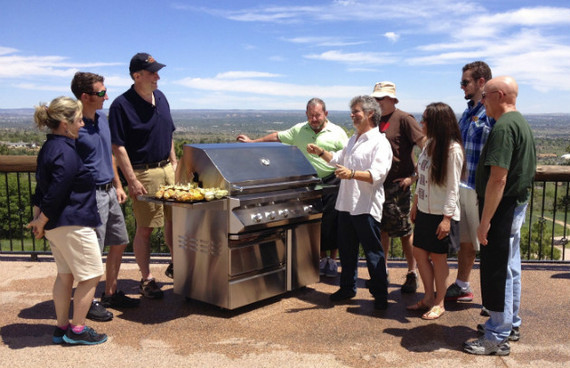Is it back-to-school time already? Maybe you're college-bound and want to show off your grill skills for your dorm mates. Maybe this is the year you aspire to smoke the competition on the tailgating circuit. Maybe you survived you first grill season and you want to take your skills to the next level. Or maybe you just can't wait until the next session of Barbecue University in June.
Here's the official Raichlen crash course on barbecuing and grilling -- the essentials you need to rock the grill every time you fire it up. I'll begin with some of the basic concepts.
Master the five methods of live-fire cooking:
Direct grilling: Cooking food directly over the fire. Used for small, tender, quick-cooking foods like steak, burgers, chicken breasts, shish kebabs, fish fillets, vegetables, etc. Direct grilling is generally done over high heat (450 to 700 degrees) and the cooking time is measured in minutes.
Indirect grilling: Cooking the food next to, not directly over the fire, at a moderate heat (325 to 400 degrees) with the grill lid closed. Used for larger cuts of meat, like prime rib, whole chickens and turkeys, whole fish, and/or fatty foods, like baby back pork ribs. To indirect grill on a charcoal grill, rake the coals into mounds at opposite sides of the grill; on a gas grill, light the one burner on a two-burner grill; the outside burners or front and rear burners on a grill with three or more burners, and cook the food over the unlit part of the grill.
Smoking/barbecuing: Similar to indirect grilling, in that the food is cooked next to, not directly over the fire with the grill or smoker lid closed. But smoking is generally done at a lower temperature (225 to 275 degrees) for a longer period (4 to 16 hours depending on the cut of meat), and it always involves hardwood chips, chunks, or logs to create a smoke flavor. Foods that are typically smoked include beef brisket, pork shoulder, spareribs, baby backs, etc.
Spit-roasting: Cooking foods on a rotisserie next to (not directly over) the heat source. Spit-roasting is well-suited to cylindrical or fatty foods, like whole chickens, duck, beef rib roasts, pork roasts, etc.
Caveman-style grilling: The most primal (and eye-popping) method of cooking. Roasting steaks, tubers, peppers, onions, eggplants, and other vegetables directly on the hot embers of a charcoal or wood fire.
Get more grilling and barbecuing pointers--types of grills, how to light them, and essential techniques--at BarbecueBible.com and in How to Grill.
SIGN UP for Steven Raichlen's UP IN SMOKE newsletter to learn more about barbecue!
--
Steven Raichlen is the author of the Barbecue! Bible cookbook series and the host of Primal Grill on PBS. His web site is BarbecueBible.com.
